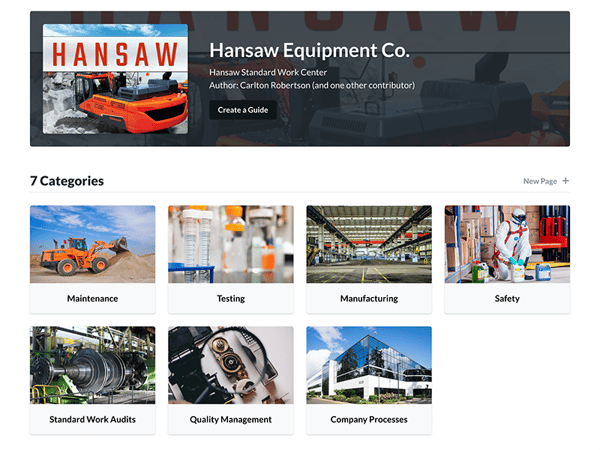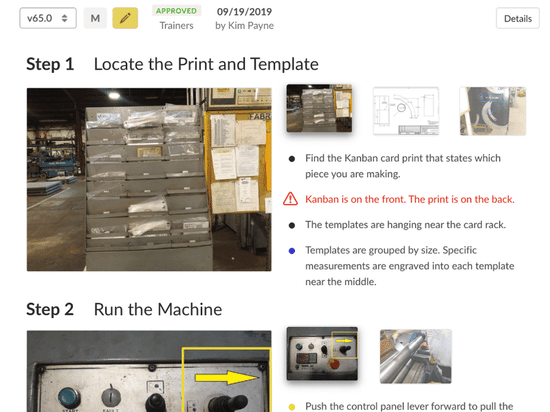
Training
5 min read
Why Sharepoint Fails at Knowledge Management

Many industrial businesses rely on generic document management tools, like Microsoft Sharepoint, to store and share files.
As a document management strategy, this makes sense. The platform isn’t much different from a digital library.
As a knowledge management strategy, Sharepoint definitively fails to address the needs of the modern industrial workforce.
The Industry Needs Better Knowledge Management
Industrial companies are adapting to the new challenges facing their workforce — mass retirements, the technical skills gap, and a shortage of experienced mentors. These challenges place knowledge management as a vital part of future operational strategy.
For decades, industrial companies have been reliant on the expertise of a few individuals to solve problems and train new employees. As more and more of these experts retire, this strategy will fail. Without proper knowledge management, hard-earned technical skills and know-how will go to waste.
Knowledge management strategies also create real-time benefits by supporting both employee performance and operational excellence. An effective knowledge management strategy leverages workforce expertise and organizational information to create insights, solve problems, and improve continuously. It is a discipline that allows employees to perform better work and solve real problems.
One Massive File Cabinet
The organization of vital company documents should be intuitive and allow workers to easily find information and apply it to their work. It’s the difference between thumbing through a massive file cabinet packed with folders and a quick Google search on your phone.
Sharepoint acts more like a messy file cabinet than a smartphone. We’ve heard customers tell horror stories where it took workers over 30 minutes to find and access a document in Sharepoint.
In other cases, documents are so difficult to access that the worker decides it is less work to create a new document — further adding to the mess. Without proper training, Sharepoint is too difficult for the average workers to use. The end result is often excess documentation that doesn’t fully utilize the system’s functionality.

(Dozuki indexes all work instructions, training materials, and documents so they are easily accessible with our intuitive search tool.)
Sloppy Revision Control
Document management tools like Sharepoint treat revised versions of a document like separate entities. This is valuable for detailed record-keeping and auditing purposes, but not relevant to the distribution and use of knowledge.
Merely fixing a grammatical error could create an entirely different Word document, if the revision is uploaded as a “new” file. As alternate versions pile up, it becomes difficult to determine which document is the ultimate source of truth.
Frontline workers only need the most current and up-to-date information relevant to their jobs. Why waste your frontline workers' time sifting through robust version histories? Not only is this inefficient, but you run the risk of an employee following outdated or inaccurate information.

Too Many Files ... and File Types
In addition to the mess and redundancies created by revision control, similar information can exist on Word documents, Powerpoint slides, or Excel spreadsheets. Knowledge that once existed as Word documents could have multiple variations as independent PDFs or Powerpoint slides. This leads to a lack of standardization in file type and format.
A Formatting Nightmare
Sharepoint manages files, not format. Companies try to maintain some standardization, but ultimately there is no control over endless styles and designs.
A process engineer could have an entirely different style than a training manager. Left to their own devices, employees can edit essential information by changing fonts, colors, sizes, highlights, markups, etc. While some customization is nice, your documented knowledge is only useful if it is presenting clearly consistently. In Sharepoint, formatting consistency is unattainable.
(Dozuki uses industry-proven procedure templates to ensure documents maintain consistency regardless of who created them.)
Get More Out of Your Documentation
Company knowledge shouldn't be collecting dust in digital file cabinets.Getting more out of your work instructions requires an investment in modern tools built specifically for industrial businesses and the unique challenges that they face.
Boost employee performance with easy to access documentation that provides a standard and central knowledge hub for your company.
Related Posts
View All Posts
Continuous Improvement
Lean Manufacturing Lessons From Wikipedia
5 min read
When Jimmy Wales, founder of Wikipedia, was interviewed on NPR’s “How I Built This,” he revealed a valuable insight — sharing and improving knowledge is hard work. The...
Continue Reading
Training
Document Management Vs. Knowledge Management
4 min read
Understanding the distinction between document management and knowledge management is vital to operational excellence. While the terms can sometimes be used interchangeably,...
Continue Reading
Success Stories
How Dozuki Streamlines Authoring Time
6 min read
Traditional methods of updating and distributing process documentation can be incredibly time consuming. For one Fortune 100 heavy machinery manufacturer, the manual process...
Continue Reading




